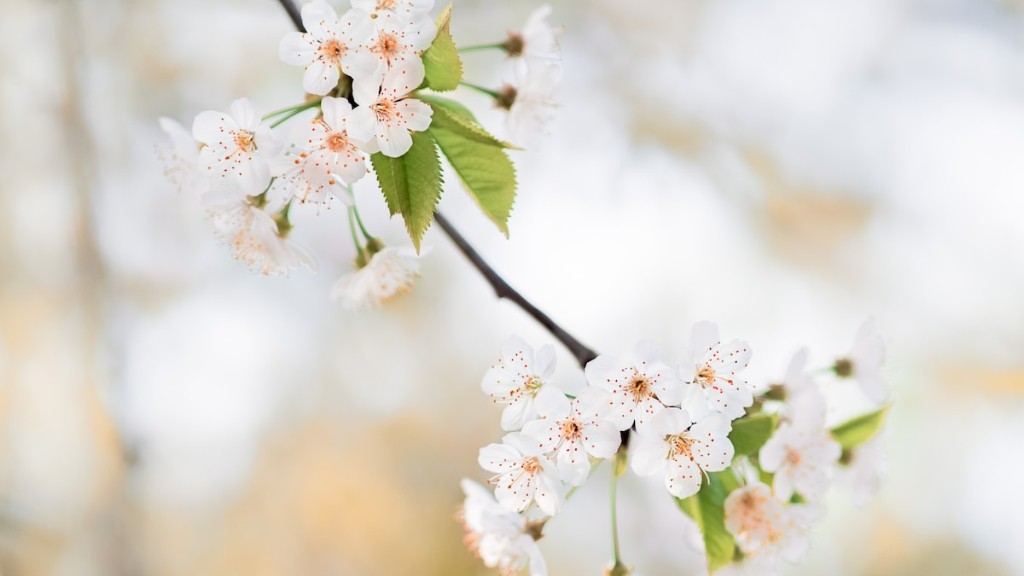Growing a lemon tree in North Carolina requires patience and endurance. The region has a climate that is favorable for some citrus fruits, including citrons and limes. However, growing lemons can be a challenge. This article provides an overview of the steps necessary for increasing the chances of success when attempting to grow a lemon tree in North Carolina.
First and foremost, choose the right variety of lemon tree; one well-suited to the conditions of North Carolina. Mediterranean lemons and Meyer lemons are amongst the varieties suitable to a North Carolina climate. The rootstock should be chosen with utmost care, as it is a determining factor when it comes to how well the plant will fare in the long run. It’s best to consult with a horticulturist or agricultural extension service to get expert advice.
Choose the right location for the lemon tree. Be sure to pick a place that ensures maximum sun exposure and also provides some protection from strong wind currents. Soil should be well-drained, deep and slightly acidic. Test the soil before settling on a location.
Water is an integral part of any lemon tree’s growth, and North Carolina’s hot, humid climate means watering your lemon tree regularly. However, excess water should be avoided as it can lead to diseases and soil-borne pests. Water your tree once every two to three days, avoiding periods of drought, over-watering and soggy soil.
Fertilizers should be applied to the lemon tree during the growing season and extra care should be given when applying. If a balanced fertilizer is used, half the recommended amount should be added at the time of planting, then the remainder at regular intervals throughout the growing season.
The lemon tree can suffer from some common pests and diseases which can be managed by using organic and environmentally safe methods. Turn to a horticulturist for guidance on the methods of control and prevention for the diseases and pests.
Finally, pruning is a good way to maintain the shape of the tree and keep it healthy. Pruning should be done twice a year, though this depends on the growth rate. Late winter or early spring, and again in late summer are the two recommended periods for pruning.
Starting a Lemon Tree
Planting a lemon tree in North Carolina is an exciting task that requires cautiousness. Whether buying a pre-potted tree, If planting a 2 or 3 year old lemon tree, choose a rootstock that is suited to the local climate. Since the rootstock will determine the plant’s long-term success, expert advice should be sought in this regard.
It is important to identify a suitable location for planting the lemon tree; one that ensures maximum sun exposure and protection from strong wind currents. Additionally, the soil should be well-drained, deep and slightly acidic. Before selecting a location for the lemon tree, it is highly recommended to conduct a soil test.
Regular watering is essential for the lemon tree, as in the North Carolina climate, where high temperatures and humidity prevail. Blotting out periods of drought and over-watering is necessary for the tree to survive. Care should also be taken to ensure there is not too much water that will cause the soil to be too soggy.
During the growth period of the lemon tree, the use of fertilizers should be kept in mind to support the growth of the plant. A balanced fertilizer is best, applied in half the recommended amounts at the time of planting, with the remaining half spread throughout the growing period.
Lemon trees being vulnerable to pests and disease, preventive measures are also mandatory. Organic and environment friendly methods should be employed to control them, which can be learned from a horticulturist.
Maintaining a Lemon Tree
After successfully starting a lemon tree, the next stage is to care for it and maintain healthy growth. For the tree’s shape and overall health, pruning twice a year is important, though it depends on the tree’s growth rate. Pruning should generally be done in late winter or early spring and again in late summer.
Proper watering should also be given to the tree. Generally a once every two to three days is considered ideal. One should also make sure water doesn’t remain stagnant in the soil, known to cause diseases and pests.If there’s an inadequate supply of water for the tree, supplement with rainwater.
Fertilizers should be replenished every planting season, to ensure the health and growth of the lemon tree. Always use a balanced fertilizer, applied in half the recommended amounts when planting and then again throughout the growth period.
A lemon tree is vulnerable to several diseases and pests, and preventive microbial actions should be undertaken to protect it. Questions about suitable treatments for disease and pest infestations should be taken to the office of an experienced horticulturist.
Finally, one should strive to maintain healthy soil conditions around the lemon tree. If a soil test has been done prior to planting, chances of it being of optimal quality are high. A healthy soil also keeps away diseases and pests, that can harm the lemon tree.
Protecting a Lemon Tree
Protecting the lemon tree is essential in order to maintain healthy growth and preserve its shape. Since the tree is vulnerable to pests and disease, effective measure must be employed to guard against them. Organic and environment friendly tactics should be explored to fight off disease and pests.
Watering at regular intervals will help the tree avoid drought and over-watering and thus minimizing the risk of soil-borne diseases. In case rainwater is not available, one can consider supplementing with tap water.
Fruit, flowers and dead leaves should be removed for health reasons, thereby avoiding the spread of disease. Additionally, the application of fertilizers during the growth season should be done with utmost care. A balanced fertilizer should be applied in half the recommended amounts when planting, followed by regular intervals throughout the growth period.
The pruning of the lemon tree twice a year, is also important and assists in maintaining the shape and health of the tree. Pruning helps remove unnecessary branches, unproductively- growing stems and excess twigs, making it easier to manage the lemon tree.
Finally, vigorous efforts should be made to maintain healthy soil around the lemon tree. One should strive to keep the soil deep and well-drained, while slightly acidic is ideal. If the soil test done prior to planting indicates that the soil is not of optimal quality, amendments can be added before planting.
Harvesting from a Lemon Tree
Once established, lemon trees bear fruit in a few years, and harvesting can begin. Though the time for harvesting may vary according to the variety of lemon tree, many do bear fruit when the tree is three years old. The fruit should be picked when it is still firm, with the yellow skin.
When harvesting, care should be taken to ensure only perfectly ripe fruit is picked from the tree. Unripe fruit should be left on the tree to mature. The process of harvesting should be carried out at times of the day when temperatures are low and insect activity is minimal, to avoid damage to the fruit.
When harvesting a lemon tree, quantity may initially be small, but as the tree becomes established, the number of fruits will increase. By the 5th or 6th year, expect significantly larger harvests.
Fruit should be invited to the tree in a basket or bag to save them from being damaged. Once the harvest is done, it is essential to discard any rotten or diseased fruit. This is done to prevent the spread of disease and to maintain the health of the tree.
Thanks to the warm conditions of North Carolina, home growing of lemon trees is becoming increasingly popular. While growing a lemon tree may be a daunting prospect initially, following the steps outlined in this document can increase the chances of success.



